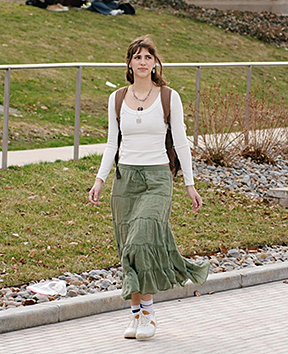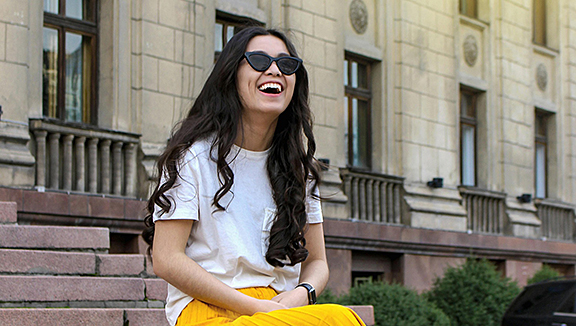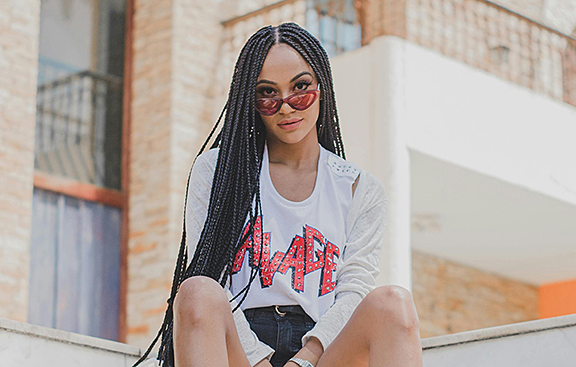The Psychology of Fashion: How Clothing Choices Impact Your Self-Esteem
The expression “you look good when you feel good” is not lost on me, neither is the expression “fake it ‘till you make it.” I see these expressions related to fashion and how individuals might express themselves through their outerwear.
 Some of the world’s biggest fashion icons exist because they demonstrate their individuality and uniqueness through fashion. As a student at Syracuse University, I see a wide array of styles everyday. Sure, fashion trends like camisole tank tops and boyfriend jeans have snuck into the closets of many TikTok-trend followers, but every once in a while, I see an outfit that nearly makes me stop in my tracks.
Some of the world’s biggest fashion icons exist because they demonstrate their individuality and uniqueness through fashion. As a student at Syracuse University, I see a wide array of styles everyday. Sure, fashion trends like camisole tank tops and boyfriend jeans have snuck into the closets of many TikTok-trend followers, but every once in a while, I see an outfit that nearly makes me stop in my tracks.
I couldn’t help but wonder how those super-stylish individuals felt when they dressed so well. Did their mood impact their style choices that day or did they choose the specific outfit because of how the clothing made them feel? To answer this, I explored the link between psychology and fashion.
Fashion psychologist, Sarah Seung-McFarland, explains the link between one’s fashion choices and cognition, with what she calls “dopamine dressing.” According to Seung-McFarland, clothing is a nonverbal form of communication and can be akin to art therapy.
In her article, Help! I Hate How I Look: Using Clothing to Manage Body Image Issues, she says, “For those who struggle with body image, clothing gives an opportunity to express body image issues in creative ways, and maybe release some tension.” For example, if one were insecure about their arms, wearing a bright, sleeveless summer dress may feel torturous at first but could help them overcome feeling insecure about their arms in the future. She asserts that the act of defying one’s insecurites could increase their self-esteem.
With this in mind, clothing choices can carry symbolic meaning, based on what Seung-McFarland calls “enclothed cognition.” This is where the expressions mentioned earlier come in. Within certain contexts of our society, certain kinds of clothing carry specific meanings. If someone woke up feeling anxious about a presentation they had at work, instead of wearing black baggy clothes, they might consider wearing an outfit they feel makes them look more confident. They could wear a striped blazer and dress slacks, for example. Based on enclothed cognition, their internalized view (or schema) of this style makes confidence feel like their reality.
She also connects this idea to cognitive-behaviorial theory: “thoughts and feelings are intertwined, and a thought can trigger feelings which reinforces thoughts” (Seung-McFarland). Clothes can create an experience that alters our mood. When we wear clothes that we associate with certain ideas, it can foster whatever feelings we associate it with.
The New York fashion scene inspires many students because it is unmistakable and unapologetic, it is easy to recognize and easy to admire. No matter what, the confidence of some of the campus’ most fashionable is readily apparent.
An Instagram account managed by students at the university posts off-guard photos of stylish students walking around campus. This page showcases the diversity of the students and their fashion choices. @sufits_ is the place where people go to support their friends who’ve been photographed or to get some fashion inspiration for themselves.
Next time you see an outfit that speaks to you, I dare you to wear it, even if your lack of confidence is convincing you to do otherwise. Consider dressing the opposite of how you feel and put these theories to the test.











